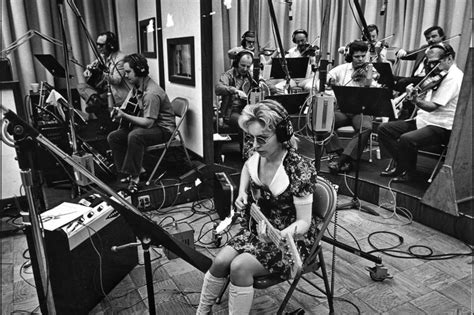
Legendary bassist Carol Kaye, a prolific session musician on countless hit records, has declined her upcoming induction into the Rock & Roll Hall of Fame as part of the “Musical Excellence Award,” calling the honor “insulting” and stating that it doesn’t adequately recognize her contributions.
Carol Kaye, the unsung hero behind the basslines of iconic tracks from artists like the Beach Boys, Tina Turner, and Simon & Garfunkel, has publicly rejected her forthcoming induction into the Rock & Roll Hall of Fame. Kaye, slated to receive the “Musical Excellence Award” this year, voiced her discontent in a recent statement, deeming the award “insulting” due to its perceived devaluation of her extensive and influential body of work. Her decision shines a spotlight on the ongoing debate surrounding the Hall of Fame’s selection process and the perceived hierarchy within its categories. This move challenges the very notion of recognition and what constitutes true acknowledgment of musical impact.
Kaye’s rejection stems from her feeling that the Musical Excellence Award, formerly known as the “Sideman” category, diminishes the significance of her contributions as a session musician. Unlike the main performer category, which often recognizes household names and front figures, the Musical Excellence Award tends to spotlight the instrumentalists and backing vocalists who often provide the backbone of popular music. Kaye believes that grouping her with other behind-the-scenes players disregards the sheer volume and influence of her work. “They’re calling it the ‘Musical Excellence Award,’ but really, it’s a sideman award,” Kaye stated. “And I’m not a sideman.”
Kaye’s career spans decades, contributing to an estimated 10,000 recordings. She’s played on countless hit records, television soundtracks, and film scores, solidifying her reputation as one of the most prolific and respected session musicians in history. Her basslines have graced iconic songs like “Good Vibrations” by the Beach Boys, “River Deep – Mountain High” by Ike & Tina Turner, and “The Beat Goes On” by Sonny & Cher, among countless others. Her innovative techniques and distinctive sound have made her a highly sought-after collaborator, influencing generations of bass players.
The Rock & Roll Hall of Fame has faced criticism over the years regarding its selection process, perceived biases, and the categories it uses to classify inductees. Some argue that the Hall favors commercially successful artists over those who may have had a more profound impact on the evolution of rock and roll. Others criticize the lack of diversity among inductees, particularly in terms of gender and genre representation. Kaye’s rejection further fuels this debate, raising questions about how the Hall recognizes and values the contributions of session musicians and other behind-the-scenes figures who play a crucial role in shaping popular music.
Kaye’s decision also highlights the complex relationship between recognition, legacy, and the value placed on different roles within the music industry. While the main performer category often brings greater visibility and prestige, it can inadvertently overshadow the contributions of session musicians who often work tirelessly behind the scenes to bring an artist’s vision to life. Kaye’s stance underscores the importance of acknowledging and celebrating the often-unseen work of these vital collaborators, ensuring that their contributions are properly recognized and valued. Her discontent reflects a larger conversation about the unsung heroes of the music industry and the need for a more equitable system of recognition.
The Rock & Roll Hall of Fame has yet to formally respond to Kaye’s rejection. However, the controversy has already sparked widespread discussion among musicians, music historians, and fans, prompting many to re-evaluate the Hall’s selection process and its treatment of session musicians. Some have expressed support for Kaye’s decision, arguing that it sheds light on a systemic problem within the Hall of Fame. Others have defended the Hall’s intentions, arguing that the Musical Excellence Award is a well-meaning effort to recognize deserving musicians who may not fit neatly into the main performer category.
Whether or not Kaye’s rejection will lead to meaningful changes within the Rock & Roll Hall of Fame remains to be seen. However, her decision has undoubtedly brought greater attention to the contributions of session musicians and the need for a more equitable and inclusive system of recognition within the music industry. Her legacy as a groundbreaking bassist is undeniable, and her refusal to accept an award she deems inadequate serves as a powerful statement about the value of artistic integrity and the importance of recognizing the unsung heroes of music. Kaye’s stance represents a powerful act of self-advocacy and a broader commentary on the often-overlooked contributions of session musicians in the music industry.
Expanding on Kaye’s Discontent and the Rock Hall’s Categories
Kaye’s primary objection lies in the perceived demotion associated with the Musical Excellence Award. She believes her extensive discography and influential playing style warrant recognition in the main performer category, where artists are typically judged on their overall impact and legacy. The Musical Excellence Award, while intended to honor musicians who have made significant contributions, often carries a connotation of being a secondary honor, reserved for those who primarily support other artists. This distinction, Kaye argues, fails to capture the breadth and depth of her work. She emphasized that she wasn’t just a “sideman” following instructions but a creative force who shaped the sound of numerous hit records.
The Rock & Roll Hall of Fame’s categories have evolved over time, reflecting the changing landscape of popular music. Originally, the Hall primarily inducted performers, but as the industry matured, it became clear that other contributors, such as songwriters, producers, and sidemen, deserved recognition. The “Sideman” category was created to address this need, but it has since been renamed the “Musical Excellence Award” in an attempt to broaden its scope and avoid the potentially limiting label of “sideman.”
However, the renaming has not entirely dispelled the perception that the award is a consolation prize for those who do not meet the criteria for the main performer category. This perception is further reinforced by the fact that the Musical Excellence Award often receives less media attention and fanfare than the main performer inductions. This disparity in recognition contributes to the feeling among some musicians, like Kaye, that their contributions are not being fully appreciated.
Analyzing the Impact of Kaye’s Session Work
Carol Kaye’s influence extends far beyond simply playing the notes on a page. She brought a unique blend of technical skill, musicality, and creativity to her session work, often improvising basslines that became integral parts of the song’s identity. Her distinctive playing style, characterized by its melodic inventiveness and rhythmic precision, can be heard on countless hit records from the 1960s and 1970s.
One of her most notable contributions was her work with the Beach Boys. Kaye’s basslines on songs like “Good Vibrations” and “California Girls” helped to define the band’s signature sound. She brought a level of sophistication and complexity to their music that elevated it beyond simple surf rock. Her ability to create memorable and catchy basslines made her an indispensable part of the Beach Boys’ recording sessions.
Beyond the Beach Boys, Kaye’s versatility allowed her to adapt to a wide range of musical styles. She played on Motown classics, pop hits, and film soundtracks, demonstrating her ability to seamlessly integrate into diverse musical contexts. Her work with artists like Ike & Tina Turner, Joe Cocker, and Barbra Streisand showcases her range and adaptability.
Kaye’s influence on subsequent generations of bass players is undeniable. Her innovative techniques and distinctive sound have inspired countless musicians to explore the possibilities of the bass guitar. She is considered a pioneer in the field of session music, paving the way for other women to succeed in a male-dominated industry.
The Broader Context of Session Musicians’ Recognition
Kaye’s rejection of the Rock & Roll Hall of Fame induction highlights a larger issue within the music industry: the lack of recognition given to session musicians. These unsung heroes often work tirelessly behind the scenes, contributing their talents and expertise to create the music that we all love. However, they rarely receive the same level of recognition as the artists they support.
Session musicians play a vital role in the recording process. They bring a level of professionalism and expertise that can elevate a song from good to great. They are often tasked with interpreting the artist’s vision and translating it into a tangible musical performance. They may also be asked to improvise or create original parts, adding their own creative input to the song.
Despite their significant contributions, session musicians often work in anonymity. Their names may not appear on the album credits, and they rarely receive public recognition for their work. This lack of visibility can make it difficult for them to build a career and earn a living wage.
There are several factors that contribute to the lack of recognition given to session musicians. One factor is the traditional hierarchical structure of the music industry, which tends to prioritize the artist over the supporting musicians. Another factor is the perception that session musicians are simply hired guns, rather than creative collaborators.
However, there is a growing movement to recognize and celebrate the contributions of session musicians. Organizations like the Musicians Hall of Fame and Museum are dedicated to honoring the achievements of these unsung heroes. Additionally, some artists have made a conscious effort to give credit and recognition to the session musicians who have worked on their recordings.
Examining Potential Reforms for the Rock Hall’s Selection Process
Kaye’s rejection has reignited the debate about the Rock & Roll Hall of Fame’s selection process and the categories it uses to classify inductees. Critics argue that the Hall’s current system is flawed and that it fails to adequately recognize the contributions of session musicians and other behind-the-scenes figures.
One potential reform would be to create a separate category specifically for session musicians. This category would be dedicated to honoring the achievements of these unsung heroes and would ensure that their contributions are properly recognized. The criteria for induction into this category could be based on factors such as the number of recordings they have played on, the impact of their playing style, and their influence on other musicians.
Another potential reform would be to revise the criteria for the Musical Excellence Award. This award could be expanded to include a broader range of musical professionals, such as songwriters, producers, and engineers. The criteria for induction could be based on factors such as their contributions to the development of rock and roll, their innovation, and their impact on the music industry.
A more radical reform would be to eliminate the category distinctions altogether and simply induct all deserving musicians into a single Hall of Fame. This approach would eliminate the perception that some inductees are more important than others and would ensure that all contributions are valued equally. However, this approach could also lead to a less diverse pool of inductees, as the most commercially successful artists would likely dominate the selection process.
Ultimately, the decision of whether or not to reform the Rock & Roll Hall of Fame’s selection process rests with the Hall’s board of directors. However, Kaye’s rejection has undoubtedly brought greater attention to the issue and has sparked a broader conversation about the need for a more equitable and inclusive system of recognition within the music industry.
The Long-Term Implications of Kaye’s Decision
Carol Kaye’s decision to reject her Rock & Roll Hall of Fame induction is likely to have long-term implications for the Hall of Fame and the music industry as a whole. Her act of defiance has brought greater attention to the contributions of session musicians and has sparked a broader conversation about the need for a more equitable and inclusive system of recognition.
One potential implication is that other session musicians may follow Kaye’s lead and reject future inductions into the Hall of Fame. This could put pressure on the Hall to reform its selection process and to give greater recognition to the contributions of behind-the-scenes figures.
Another potential implication is that Kaye’s decision will inspire other musicians to advocate for themselves and to demand the recognition that they deserve. Her act of self-advocacy could empower other artists to speak out against injustice and to fight for a more equitable system of recognition within the music industry.
Furthermore, Kaye’s story could raise greater awareness among music fans about the contributions of session musicians. This increased awareness could lead to greater appreciation for the often-unseen work of these vital collaborators. It may also lead to greater demand for session musicians to be credited and recognized for their contributions to recordings.
In the long run, Kaye’s decision could help to create a more equitable and inclusive music industry, where all contributions are valued equally. Her legacy as a groundbreaking bassist and a champion of session musicians will undoubtedly inspire generations of musicians to come. Kaye’s stance might encourage the Rock & Roll Hall of Fame and other similar organizations to reconsider their methods of honoring music legends, potentially leading to a more encompassing and fair system.
Quotes from the Source Article:
- “They’re calling it the ‘Musical Excellence Award,’ but really, it’s a sideman award,” Kaye stated. “And I’m not a sideman.”
Frequently Asked Questions (FAQs)
-
Why did Carol Kaye reject her Rock & Roll Hall of Fame induction? Carol Kaye rejected the induction because she felt the “Musical Excellence Award” (formerly the “Sideman” category) diminished her extensive and influential contributions as a session musician. She believes her work warrants recognition in the main performer category.
-
What is the “Musical Excellence Award” and why is it controversial? The “Musical Excellence Award” is a Rock & Roll Hall of Fame category intended to honor musicians who have made significant contributions but may not fit neatly into the main performer category. It’s controversial because it’s often perceived as a secondary honor, implying that recipients are less important than those inducted as performers. This perception diminishes the contributions of session musicians, producers, and other behind-the-scenes figures.
-
What are some of Carol Kaye’s most notable musical contributions? Carol Kaye contributed to an estimated 10,000 recordings, including iconic songs like “Good Vibrations” and “California Girls” by the Beach Boys, “River Deep – Mountain High” by Ike & Tina Turner, and “The Beat Goes On” by Sonny & Cher. She has also worked on numerous film and television soundtracks.
-
How has the Rock & Roll Hall of Fame responded to Kaye’s rejection? As of the latest reports, the Rock & Roll Hall of Fame has not formally responded to Carol Kaye’s rejection.
-
What impact might Kaye’s rejection have on the Rock & Roll Hall of Fame and the music industry? Kaye’s rejection could lead to increased scrutiny of the Hall of Fame’s selection process and categorization of inductees. It may also inspire other session musicians to advocate for greater recognition and potentially lead to reforms within the Hall of Fame and the broader music industry regarding the acknowledgment of behind-the-scenes contributors.
Expanding on the Rock Hall’s History and Selection Process
The Rock & Roll Hall of Fame was established in 1983 with the mission of documenting the history of rock and roll and honoring the artists, producers, and other individuals who have shaped the genre. The first induction ceremony was held in 1986, and since then, the Hall of Fame has inducted hundreds of individuals and groups.
The selection process for the Rock & Roll Hall of Fame is complex and involves multiple stages. First, a nominating committee composed of music historians, critics, and industry professionals submits a list of potential nominees. To be eligible for nomination, an artist must have released their first commercial recording at least 25 years prior to the year of nomination.
The nominating committee then votes on the nominees, and the top vote-getters are placed on a ballot that is sent to a larger voting body composed of over 1,000 artists, historians, and music industry professionals. The voters are asked to select the nominees they believe are most deserving of induction.
The artists who receive the most votes are inducted into the Rock & Roll Hall of Fame. The number of inductees each year varies, but typically ranges from five to seven.
Over the years, the Rock & Roll Hall of Fame has faced criticism regarding its selection process and the categories it uses to classify inductees. Some critics argue that the Hall favors commercially successful artists over those who may have had a more profound impact on the evolution of rock and roll. Others criticize the lack of diversity among inductees, particularly in terms of gender and genre representation.
The Rock & Roll Hall of Fame has made some efforts to address these criticisms. In recent years, the Hall has inducted more women and artists from diverse genres. The Hall has also revised its selection process to give greater weight to factors such as innovation and influence.
However, the Rock & Roll Hall of Fame continues to be a subject of debate and controversy. Kaye’s rejection of her induction is just the latest example of the challenges the Hall faces in its mission to document and honor the history of rock and roll.
Delving Deeper into Kaye’s Legacy and Musical Techniques
Carol Kaye’s influence on the world of bass playing extends far beyond her extensive discography. She developed innovative techniques and approaches to the instrument that have been adopted by countless bassists. Her focus on creating melodic and rhythmically interesting basslines helped to elevate the role of the bass in popular music.
One of Kaye’s signature techniques is her use of a pick. While many bass players traditionally use their fingers to pluck the strings, Kaye preferred the attack and precision of a pick. She developed a unique picking style that allowed her to create a wide range of sounds and textures.
Kaye also emphasized the importance of understanding music theory and harmony. She believed that a strong understanding of music theory was essential for creating effective and compelling basslines. She encouraged her students to study harmony, counterpoint, and orchestration.
Beyond her technical skills, Kaye also possessed a deep musicality and a keen ear for what sounded good. She had a natural ability to create basslines that complemented the song and enhanced the overall musical experience. Her improvisational skills allowed her to come up with creative and unexpected parts on the spot.
Kaye’s legacy as a bassist and educator is undeniable. She has inspired generations of musicians to explore the possibilities of the bass guitar and to develop their own unique styles. Her contributions to the world of music will continue to be celebrated for years to come. Her teaching materials, including books and online courses, continue to influence bass players around the globe.
Analyzing the Economics of Session Music and its Impact on Recognition
The economics of session music play a significant role in the level of recognition that session musicians receive. In the past, session musicians were often paid a flat fee for their services, with no royalties or other ongoing compensation. This meant that they did not directly benefit from the commercial success of the recordings they contributed to.
In recent years, there has been a growing movement to improve the economic conditions for session musicians. Some musicians’ unions have negotiated agreements with record labels that provide for royalties and other ongoing compensation for session work. Additionally, some artists have made a conscious effort to share royalties with the session musicians who have worked on their recordings.
However, the economic landscape for session musicians remains challenging. Many session musicians still work on a freelance basis and are not entitled to benefits such as health insurance or retirement savings. The lack of economic security can make it difficult for session musicians to build a sustainable career.
The economic challenges faced by session musicians also contribute to the lack of recognition they receive. Because they are often not directly tied to the commercial success of the recordings they contribute to, they may not have the same incentive to promote their work or to seek public recognition. Additionally, the record labels and artists who benefit from their services may not have the same incentive to promote the contributions of session musicians.
Addressing the economic challenges faced by session musicians is essential for ensuring that they receive the recognition they deserve. Improving their economic conditions will not only help them to build sustainable careers but will also incentivize them to promote their work and to seek public recognition.
Exploring Alternative Recognition Platforms for Musicians
In addition to the Rock & Roll Hall of Fame, there are other platforms and organizations that recognize and celebrate the contributions of musicians. These alternative platforms can provide valuable recognition for musicians who may not be recognized by the Rock & Roll Hall of Fame.
One example is the Musicians Hall of Fame and Museum, which is dedicated to honoring the achievements of session musicians and other behind-the-scenes figures. The Musicians Hall of Fame and Museum inducts new members each year and also hosts exhibits and educational programs that celebrate the contributions of these unsung heroes.
Another example is the Grammy Awards, which recognize excellence in the recording arts and sciences. The Grammy Awards have several categories that specifically recognize the contributions of instrumentalists and other non-performing musicians.
In addition to these formal organizations, there are also many online platforms that can be used to recognize and celebrate the contributions of musicians. Websites like AllMusic and Discogs provide comprehensive databases of music recordings, including information about the session musicians who played on those recordings. These platforms can help to raise awareness about the contributions of session musicians and to give them credit for their work.
Ultimately, the best way to ensure that musicians receive the recognition they deserve is to support their work and to advocate for their rights. By attending their concerts, buying their recordings, and promoting their music, we can help to raise awareness about their contributions and to create a more equitable and inclusive music industry. Carol Kaye, through her actions, emphasizes this point by standing up for her contributions and sparking a broader dialogue about recognition in the music industry.









